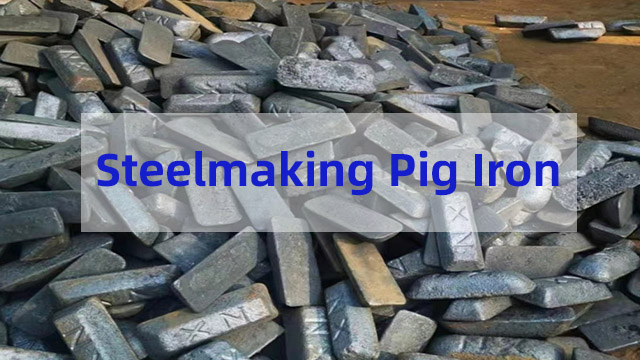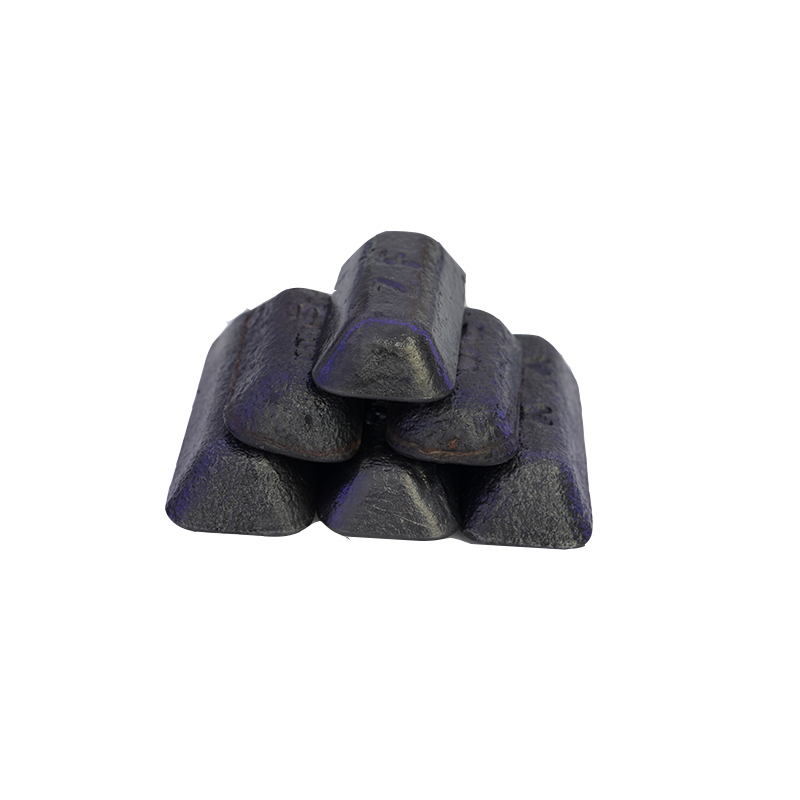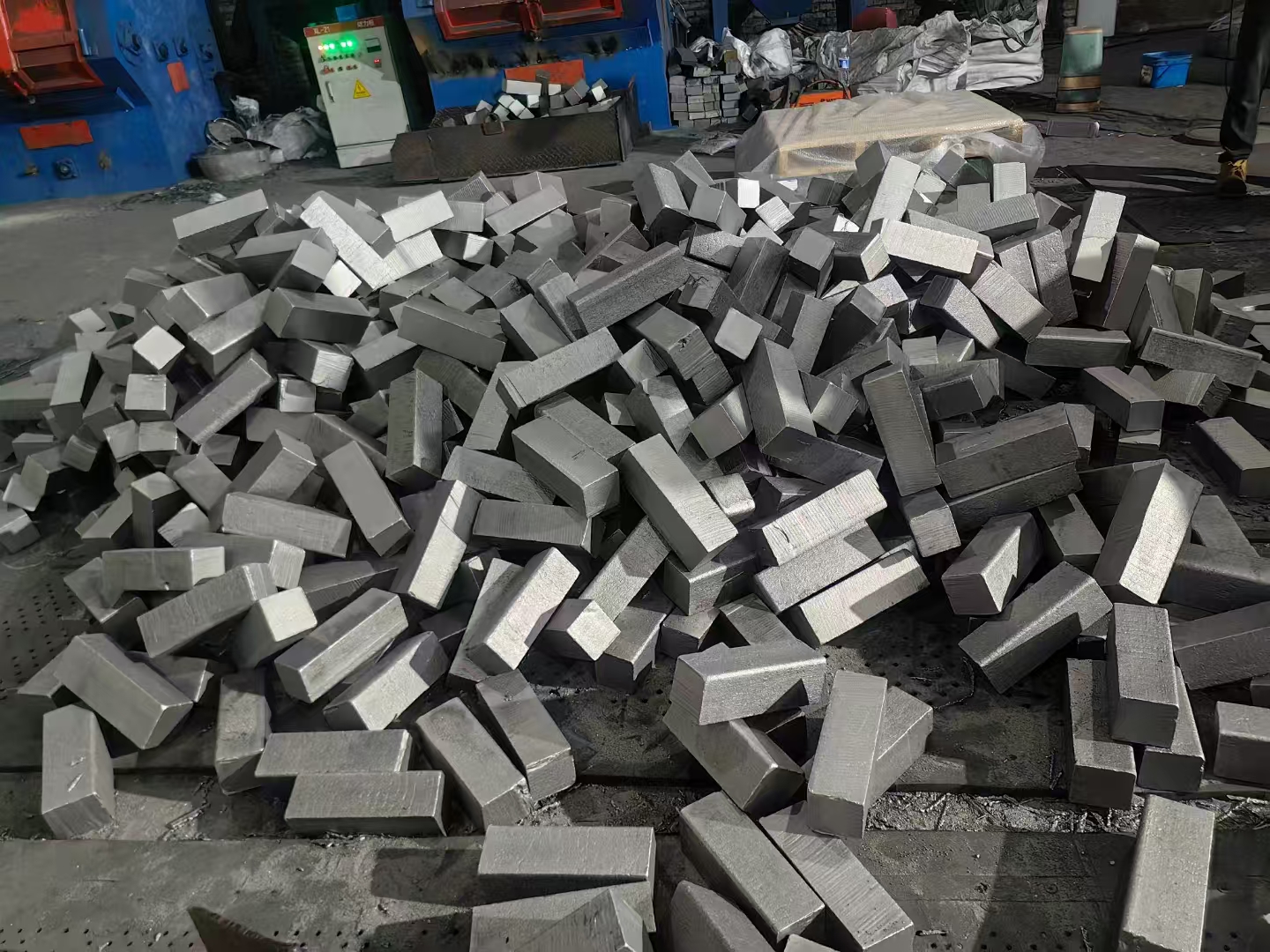What Is Steelmaking Pig Iron?
2025-01-20 16:03:13 hits:0
In the complex system of iron and steel production, steelmaking pig iron is a crucial basic raw material, playing an indispensable supporting role in the development of modern industry.

I. Definition of Steelmaking Pig Iron
Steelmaking pig iron is an iron - carbon alloy obtained by smelting iron ore in a blast furnace. Its main purpose is to serve as a raw material for steelmaking. It is further refined in steelmaking equipment such as converters to remove impurities and adjust the composition, thus producing various high - quality steel products.
II. Composition Characteristics
1. Carbon Content
Carbon is one of the main components of steelmaking pig iron, with its content usually ranging from 2.0% to 4.5%. The relatively high carbon content endows steelmaking pig iron with some unique properties. However, during the steelmaking process, the amount of carbon to be removed needs to be precisely controlled to meet the carbon requirements of the target steel. Because steels with different carbon contents have significantly different properties such as strength, hardness, and toughness.
2. Silicon Content
The silicon content in steelmaking pig iron is relatively low, generally below 1.25%. An appropriate amount of silicon can reduce the melting point of hot metal and improve its fluidity, which is beneficial for the smelting process in the blast furnace and subsequent steelmaking operations in the converter. At the same time, silicon can also play a certain role in deoxidation during the steelmaking process.
3. Other Elements
In addition to carbon and silicon, steelmaking pig iron also contains small amounts of elements such as manganese, phosphorus, and sulfur. Manganese helps to improve the strength and hardness of steel and can partially deoxidize and desulfurize during the steelmaking process. Although phosphorus can increase the strength of steel, it reduces the toughness and cold - bending performance of steel, so its content needs to be strictly controlled during steelmaking. Sulfur is a harmful impurity that can cause hot brittleness in steel and seriously affect the quality of steel. Therefore, it is necessary to remove sulfur as much as possible during the steelmaking process.

III. Performance Characteristics
1. Hardness and Brittleness
Due to the relatively high carbon content, steelmaking pig iron has high hardness. However, this high hardness is accompanied by great brittleness, making it prone to fracture when subjected to impact loads. This characteristic determines that steelmaking pig iron cannot be directly used to manufacture structural parts that bear complex stresses and needs to be further processed through the steelmaking process.
2. Melting Point Characteristics
Steelmaking pig iron has a relatively low melting point, which benefits from its composition characteristics. The lower melting point enables the pig iron to be melted relatively quickly during converter steelmaking, shortening the steelmaking time and improving production efficiency. At the same time, in the blast furnace smelting process, an appropriate melting point is also conducive to the smooth generation and discharge of hot metal.
IV. Production Process
1. Blast Furnace Smelting
First, iron ore, coke, and fluxes (such as limestone) are charged into the blast furnace in a certain proportion. In the blast furnace, coke burns to generate high temperature, causing a series of complex chemical reactions in the iron ore, which is gradually reduced to hot metal. During this process, elements such as carbon and silicon continuously dissolve into the hot metal, forming the initial composition of steelmaking pig iron. After a period of smelting, the hot metal accumulates at the bottom of the blast furnace and is regularly discharged through the taphole.
2. Transportation and Storage
The hot metal discharged from the blast furnace is usually transported to the hot metal pretreatment workshop of the steel plant or directly to the converter steelmaking workshop by special equipment such as torpedo cars. During transportation, measures need to be taken to maintain the temperature of the hot metal to prevent it from solidifying. If steelmaking is not carried out immediately, the hot metal will be stored in a mixer furnace for supply to the steelmaking process at any time.
3. Steelmaking Refining
In the converter steelmaking stage, the steelmaking pig iron is poured into the converter, and an appropriate amount of scrap steel, slag - making agents, etc. are added at the same time. By blowing oxygen into the converter, elements such as carbon, silicon, and manganese in the pig iron undergo oxidation reactions to remove impurities, reduce the carbon content, and adjust the proportion of other elements, ultimately obtaining molten steel that meets the requirements. During this process, parameters such as the oxygen - blowing time, temperature, and raw material addition amount need to be precisely controlled to ensure the quality of the steel.

V. Application Fields
1. Construction Industry
Various construction steels refined from steelmaking pig iron, such as deformed steel bars and wire rods, are widely used in building structures. These steels have good strength and toughness and can withstand the self - weight and various loads of buildings, ensuring the safety and stability of buildings. Whether it is high - rise buildings, bridges, or infrastructure construction, construction steels produced with steelmaking pig iron as the basic raw material are indispensable.
2. Machinery Manufacturing
In the field of machinery manufacturing, high - quality steels are required for various mechanical equipment parts and the main structures of large - scale machinery. After refining and processing, steelmaking pig iron can be made into alloy steels, carbon steels, etc., which can meet the performance requirements of mechanical parts in terms of strength, wear resistance, corrosion resistance, and other aspects. For example, key parts such as the crankshafts of automobile engines and the main shafts of machine tools require steels with specific properties, and the production of these steels is inseparable from steelmaking pig iron.
3. Automotive Industry
All parts of automobiles, such as the body, engine, and chassis, use a large amount of steel. High - strength steels and high - quality carbon steels produced from steelmaking pig iron provide good structural strength and safety for automobiles. At the same time, with the increasing requirements for lightweight and energy conservation and emission reduction in the automotive industry, high - strength and low - density steels produced through the refining and alloying treatment of steelmaking pig iron are also being increasingly widely used in automobile manufacturing.
VI. Comparison with Other Pig Irons
1. Comparison with Foundry Pig Iron
Foundry pig iron is mainly used for casting various mechanical parts, automotive components, pipe fittings, etc., and its shape and size are more diverse to meet the needs of different casting processes. Compared with steelmaking pig iron, foundry pig iron has a higher silicon content, generally ranging from 1.25% to 3.6%. The higher silicon content gives foundry pig iron better fluidity and casting performance, enabling it to better fill the mold cavity during the casting process and form complex shapes. Steelmaking pig iron, on the other hand, focuses more on the reaction characteristics and composition adjustment during the steelmaking process to produce high - quality steel.
2. Comparison with Pig Iron for Ductile Iron
Pig iron for ductile iron is a key raw material for producing ductile iron and is generally processed into relatively uniform granular or small - lump forms. Pig iron for ductile iron has more stringent requirements for chemical composition, especially extremely low requirements for the content of harmful elements such as sulfur and phosphorus. This is because during the production process of ductile iron, these harmful elements will seriously affect the spheroidizing effect and the quality of the casting. In contrast, although steelmaking pig iron also controls the content of sulfur and phosphorus, the specific index requirements are different from those of pig iron for ductile iron. Its focus is on meeting the needs of the steelmaking process and producing steel grades that meet the requirements.
Based on the above explanation, you should have a better understanding of what steelmaking pig iron is. As a pig iron supplier, we would like to receive your letter or inquiry. If you have any requests, please feel free to leave a message at any time. Let us serve you.

 en
en  fra
fra  de
de  ru
ru  gle
gle  th
th  ara
ara  it
it  jp
jp  kor
kor  zh
zh 


